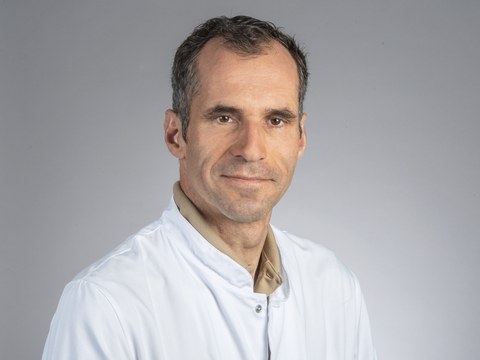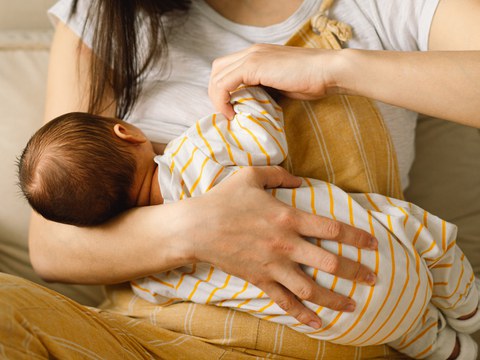Nov 28, 2024
Bone formation during breastfeeding: How a brain hormone regenerates the skeleton
The maternal skeleton has the fascinating ability to recover quickly during the period of breastfeeding. While lactating, the brain hormone CCN3 is released from the hypothalamus and acts as a booster for bone regeneration. This finding has a wide range of potential applications. Prof. Lorenz Hofbauer has now explained and analyzed these potential applications in an article in the New England Journal of Medicine.
Breastfeeding is of tremendous importance for the development of the newborn and – in addition to the immunological and psychosocial aspects – plays a key role in the supply of nutrients to the infant. An essential aspect of breast milk production is the transfer of calcium from mother to child, which is needed for the child's skeleton to mature. During pregnancy, the mother's body already takes on a "calcium debt" of about 30 grams of calcium – a further 60 grams of calcium are lost during a six-month breastfeeding period. Without adequate compensation, this short-term deficit would result in a significant loss of bone mass and increased fragility, especially for women who have given birth several times and breastfed for longer periods.
Recent findings by a Californian research group (1) has now discovered an amazing mechanism in mouse models that enables the mother to quickly compensate for bone loss during lactation. Special nerve cells (ARCKiss1 neurons) in the hypothalamus, a region in the diencephalon, release a newly discovered osteoanabolic hormone called CCN3, which strongly promotes bone formation. During lactation, the production of CCN3 increases, leading to an increase in bone density and improved bone healing. The study revealed that this improved bone regeneration is due to an increased number and a rise in the activity of skeletal stem cells.

Prof. Lorenz Hofbauer
In the New England Journal of Medicine's Clinical Implications of Basic Research (2), Prof. Lorenz Hofbauer, Professor of Endocrinology and Geriatric Medicine at the Carl Gustav Carus Faculty of Medicine at TU Dresden, assesses the clinical translation and therapeutic potential. "This discovery opens up a fascinating new approach to understanding the regulation of bone health during lactation," he explains. "Apart from the evolutionary aspect, these findings provide new perspectives for a better understanding of bone diseases, especially in women with osteoporosis after several pregnancies and prolonged breastfeeding, but also in cases of postmenopausal osteoporosis." Since the brain region in which CCN3 is produced also controls the energy balance and the production of gonadotropin-releasing hormones, and therefore female reproduction and puberty, other diseases could also originate from a disturbed CCN3 production. "Fragility fractures are particularly common in women with delayed puberty, anorexia nervosa or relative energy deficiency in sports (REDS; female athlete triad)," explains Prof. Hofbauer.
This new concept could also provide a key to the development of new therapeutic options. Given the role of CCN3 as a fast switch between catabolic and anabolic processes, the targeted stimulation of endogenous CCN3 production or the development of CCN3 analogues could open up new therapeutic strategies to improve bone health and bone healing. "The clinical potential of these discoveries is enormous," says Prof. Hofbauer. "If these results are confirmed in clinical trials in humans, we could have a major advance in the treatment of osteoporosis and fracture healing, especially in older patients, for whom current therapies have limited efficacy."
Background:
(1) Babey ME, Krause WC, Chen K, Herber CB, Torok Z, Nikkanen J, Rodriguez R, Zhang X, Castro-Navarro F, Wang Y, Wheeler EE, Villeda S, Leach JK, Lane NE, Scheller EL, Chan CKF, Ambrosi TH, Ingraham HA. A maternal brain hormone that builds bone. Nature. 2024 Aug;632(8024):357-365. doi: 10.1038/s41586-024-07634-3
https://pmc.ncbi.nlm.nih.gov/articles/PMC11306098/pdf/41586_2024_Article_7634.pdf
(2) Hofbauer LC. Building bone while making milk. N Engl J Med 2024;391:2052-2054.
https://www.nejm.org/doi/pdf/10.1056/NEJMcibr2409260
Contact:
Professor Dr. Lorenz C. Hofbauer. MD
Carl Gustav Carus Faculty of Medicine
University Center for Healthy Aging &
Division of Endocrinology/Diabetes/Bone Diseases
Medical Clinic III
Carl Gustav Carus University Hospital
Fetscherstraße 74
01307 Dresden

